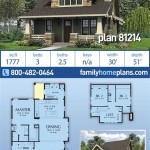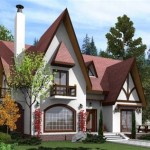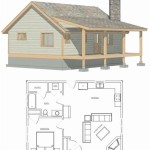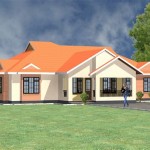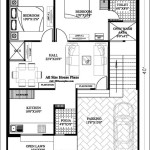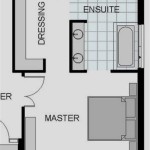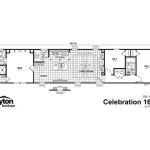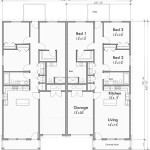2D House Plans: A Comprehensive Guide
A 2D house plan, also known as a floor plan, is a scaled drawing that shows the relationship between rooms, spaces, and physical features viewed from above. It provides a bird's-eye view of the layout of a single story. These plans are essential for visualizing the flow and functionality of a house before construction begins. They serve as a blueprint for builders, architects, and homeowners, enabling clear communication and preventing costly mistakes during the building process.
Several key elements constitute a comprehensive 2D house plan. Walls, doors, and windows are represented with specific symbols and line weights. Dimensions are clearly marked to indicate the size and scale of each room and the overall structure. Room labels identify the intended function of each space. Locations of fixtures like plumbing, electrical outlets, and appliances are often included for a detailed overview. Furniture placement can also be incorporated, though this is more common in presentation plans for potential buyers or renters.
Different types of 2D house plans cater to various needs and stages of the building process. A basic floor plan shows the overall layout and room dimensions. A detailed floor plan includes information about plumbing, electrical systems, and specific building materials. A furniture plan focuses on interior design and space optimization. A presentation plan enhances visual appeal with color and textures for marketing purposes. A construction plan provides highly detailed specifications for builders and contractors, often including cross-sections and elevations.
The advantages of using 2D house plans are numerous. They facilitate accurate cost estimation by providing a clear picture of the materials and labor required. They aid in efficient project management by enabling clear communication between all stakeholders, from architects to builders. They allow for informed decision-making throughout the design process, allowing homeowners to visualize and adjust the layout before construction. Moreover, they are crucial for obtaining building permits, as most jurisdictions require detailed floor plans for approval.
Creating 2D house plans traditionally involved manual drafting, which was time-consuming and required specialized skills. However, the advent of computer-aided design (CAD) software has revolutionized the process. CAD software offers a range of tools for creating accurate and detailed 2D house plans. These tools allow for easy modifications and revisions, streamlining the design process and reducing the risk of errors. Various CAD software options cater to different user levels, from beginner-friendly programs to advanced professional suites.
When choosing CAD software for creating 2D house plans, several factors should be considered. Ease of use is crucial, especially for individuals without prior CAD experience. Features offered by the software should align with specific project needs, such as the ability to create detailed construction plans or generate 3D models. Cost is another important factor, as software prices can vary significantly. Compatibility with other software and file formats should be considered for seamless collaboration with different stakeholders. Finally, user support and available training resources can be valuable for mastering the software and troubleshooting any issues.
Working with 2D house plans effectively requires understanding certain best practices. Maintaining consistent scale throughout the plan is crucial for accuracy and preventing discrepancies. Using clear and standardized symbols for doors, windows, and fixtures ensures easy interpretation by all parties involved. Accurate dimensioning is essential for precise construction and material estimation. Labeling rooms and spaces clearly avoids ambiguity and promotes efficient communication. Regularly backing up the digital file protects against data loss and facilitates version control.
While 2D house plans provide a valuable representation of the layout, they do have limitations. They lack the visual depth and realism of 3D models, making it harder for some individuals to visualize the finished space. They may not effectively convey complex architectural features or intricate details. Therefore, 2D plans are often used in conjunction with other visual aids, such as elevations, sections, and 3D renderings, to provide a comprehensive understanding of the design.
Numerous resources are available for individuals seeking to learn more about 2D house plans or access pre-designed templates. Online tutorials and courses offer comprehensive training on using CAD software and creating professional-quality floor plans. Architectural design books and publications provide in-depth knowledge of building design principles and best practices. Online plan libraries offer a vast collection of pre-designed house plans that can be customized to meet individual needs. Consulting with architects or draftspersons can provide personalized guidance and ensure the creation of accurate and compliant plans.
The evolution of 2D house plans continues with advancements in technology. Building Information Modeling (BIM) software is becoming increasingly popular, integrating 2D plans with 3D models and data-rich information about building materials, energy efficiency, and construction scheduling. This integrated approach enhances collaboration, improves efficiency, and facilitates more informed decision-making throughout the building lifecycle.

Beautiful 2d Floor Plan Ideas Engineering Discoveries Home Map Design House Building Plans Designs

2d Floor Plans

30 Fantastic 2d Floor Plan Ideas Engineering Discoveries 30x50 House Plans Simple

Draw 2d Floor Plans In Minutes Not Hours Cedreo

2d Floor Plan Archives Page 2 Of 6 Dk Home Designx

Autocad Complete 2d And 3d House Plan Part 2

2d Floor Plans
28 Incredible 2d House Plans For Various Locations Engineering Discoveries

Architectural Plans 2d Floor Plan Design

Farm Plan Archives Free House And Apartment

